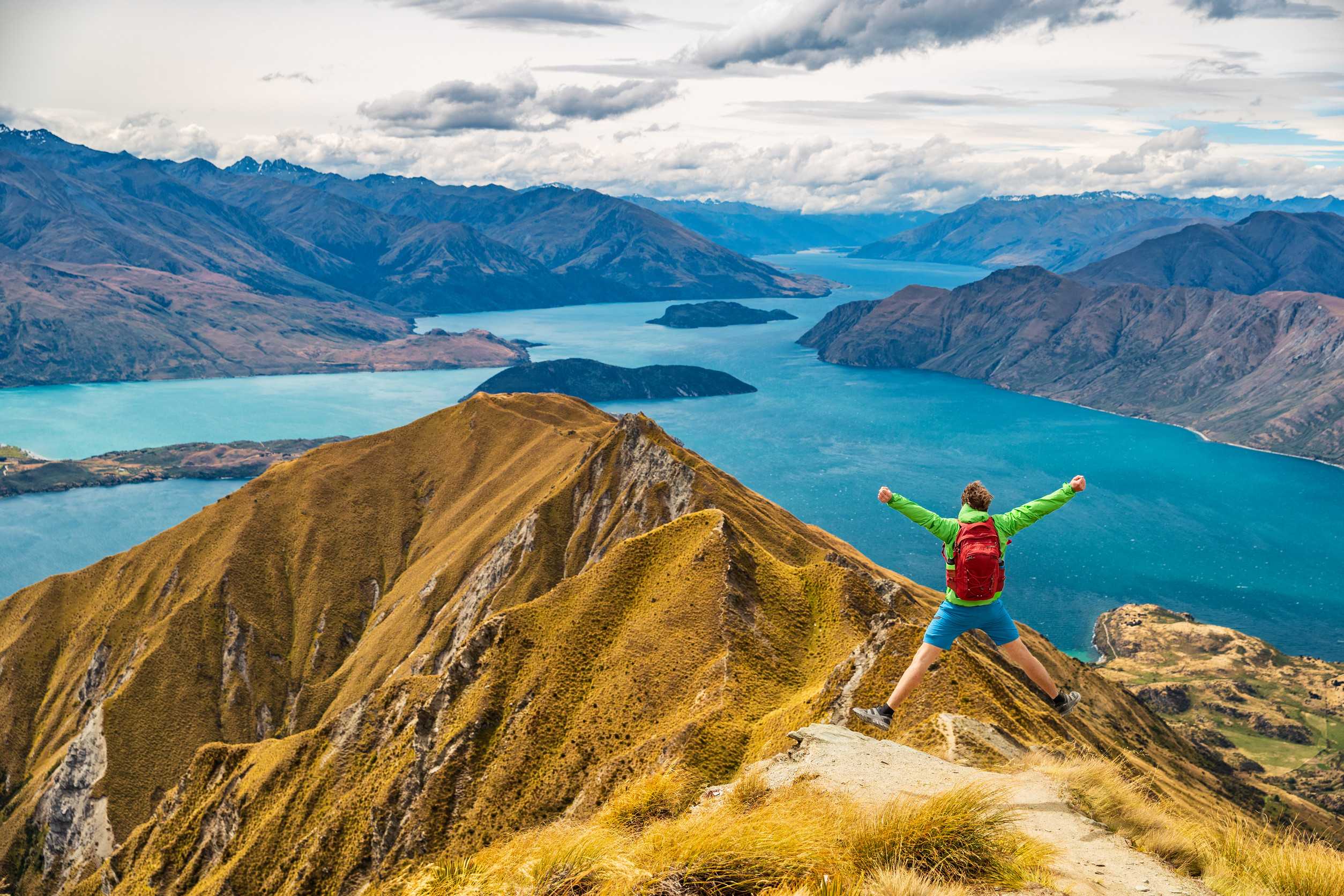
New Zealand offers snow-covered peaks, glow-worm caves, rugged coastlines shaped by the sea, and genuine hospitality, spread across 2 main islands. For first-time visitors, the experience can feel both welcoming and slightly overwhelming. Each step has been carefully set out here, from securing your New Zealand eTA (tourist/business) to travel preparation, from the rhythm of North Island cities to the remote beauty of the South Island, allowing your first journey to unfold with clarity and confidence.
Before you travel, make sure you have the following documents in order:
Travellers from eligible countries must apply for a New Zealand eTA Application if visiting New Zealand for tourism. This electronic travel authority is required before boarding and permits short stays under the visa-waiver programme.
Ensure your passport does not expire within 3 months of the date you plan to leave New Zealand.
A recent passport-sized photograph that meets official specifications.
Bank cards are accepted throughout New Zealand; however, it is wise to keep a small amount of cash for use in local markets and rural cafés. Inform your bank in advance about using your card internationally.
Most long-haul flights arrive in Auckland or Christchurch, while Wellington and Queenstown handle seasonal routes. When reviewing fares, compare the cost of a separate domestic flight with Air New Zealand against that of a direct connecting international ticket.
The time you travel to New Zealand affects what you will see and do. Weather, outdoor conditions, and local activity vary across the year. By looking closely at what each period offers, you can plan a journey that matches your interests and travel style.
Many people choose this time of year to visit New Zealand for warm beach days, water activities, forest walks, and mountain hikes. Tourist numbers are high, and local residents also travel more during the summer, taking advantage of the school holidays and Christmas break.
|
Summer (December-February): Average Daytime Temperature: 20-25 °C (68-77 °F) |

As temperatures drop and the leaves take on deep autumn shades, New Zealand presents a striking seasonal landscape. The cool air and clear skies provide ideal conditions for exploring natural scenery, enjoying local harvests, and taking part in cultural events.
|
Autumn (March-May): Average Daytime Temperature: 17-21 °C (62-70 °F) |

During winter, New Zealand offers snow-covered landscapes that appeal to both those seeking outdoor adventure and those who enjoy staying warm indoors. Mornings begin with frost and unfold into striking scenery and engaging seasonal activities.
|
Winter (June-August): Average Daytime Temperature: 12-16 °C (53-61 °F) |

Spring in New Zealand brings warmer weather with frequent rain. It is ideal for hiking and, in some areas, spring skiing. Blossoms and lambs fill the countryside, offering excellent photo opportunities. Warm days and cool nights are typical.
|
Spring (September-November): Average Daytime Temperature: 16-19 °C (61-66 °F) |

New Zealand’s weather changes often. You may experience sunshine, rain, wind, and cool air in a single day.These items prepare you for changing conditions and make day-to-day travel more manageable across New Zealand.
Travel to New Zealand begins well before your flight touches down. Understanding what is expected upon arrival ensures you meet all official procedures without confusion or delay.
You must be aware of specific requirements before you arrive to ensure a smooth entry process. Being prepared helps you move through entry checks efficiently and start your visit with clarity.
New Zealand enforces some of the strictest biosecurity measures in the world to protect its unique environment. You must declare all food, baby products, medicines, plants, or any restricted items. Immigration personnel may inspect your luggage during the arrival procedure. You also need to complete the traveller declaration form during the immigration procedure.

You can choose a shuttle, taxi, or app-based car service for a direct transfer to your destination. Inter City, Flexi Pass buses provide a cost-effective and flexible option for onward travel.
Domestic flights are convenient for same-day connections between cities such as Auckland and Queenstown or Wellington and Christchurch.

In New Zealand, it is common to greet others with “Kiaora,” a traditional Maori phrase. The local culture values politeness, fairness, and modesty in everyday interactions.
When visiting someone’s home, remove your shoes at the entrance. In public, queue calmly and treat others with respect. Tipping is not expected and is only given for exceptional service.
The Maori value of kaitiakitanga reflects a duty to care for nature. When outdoors, stay on marked tracks, take your rubbish with you, and avoid disturbing plants or wildlife.

You may purchase a local SIM card from providers such as Spark, One New Zealand, or 2degrees upon arrival, which offer affordable mobile data options. Free Wi-Fi is available in public libraries, i-SITE visitor centres, and many cafés. It is advisable to download useful apps in advance, including Google Maps for offline navigation, CamperMate for facility locations, and MetService NZ for weather updates.

After completing arrival procedures, your journey in New Zealand truly begins. Each part of the country offers something different: rugged landscapes, cultural depth, and everyday charm.
What follows is a clear outline of locations across the country that offer distinct experiences. Each area gives you a chance to understand New Zealand beyond the surface.
Climb Maungawhau / Mt Eden for a panoramic view of the volcanic crater and city skyline. Sail to Waiheke Island for vineyard tours and contemporary art galleries. Explore the Auckland War Memorial Museum and Auckland Art Gallery to gain insight into Maori and Pacific cultures. Enjoy a guided walk through Auckland Domain or picnic in the Wintergardens. Thrill-seek with a Sky Tower SkyWalk or SkyJump, or unwind on the west coast’s black-sand beaches like Piha and Muriwai, ideal for surfing and sunset views.

Recommended Day Trips:
|
Destination |
Description |
|
Waitomo Glowworm Caves |
Take a guided boat tour through underground caves illuminated by glow worms. |
|
Rangitoto Island |
Hike across lava fields and reach the summit of this dormant volcanic island. |
|
Tiritiri Matangi Island |
Explore a protected sanctuary home to rare native birds and forested trails. |
Witness bubbling mud pools and colourful geothermal formations at Wai-O-Tapu Thermal Wonderland. See the Pōhutu Geyser erupt in Te Puia, home to the New Zealand Maori Arts and Crafts Institute. Relax in natural mineral spas like Polynesian Spa or enjoy a scenic soak at Secret Spot Hot Tubs. Visit theredwoods Whakarewarewa Forest for walking and mountain biking trails among towering trees. In the evening, attend a Maori cultural performance and share a traditional hangi feast in a marae-style village.

Enjoy lake cruises, sailing, or kayaking to the Maori rock carvings at Mine Bay. Take a scenic flight over the Taupo Volcano or try skydiving above the lake’s brilliant blue waters. Tackle the renowned Tongariro Alpine Crossing, a full-day hike across volcanic terrain. Fish for rainbow trout in the Tongariro River, or relax in thermal pools such as Wairakei Terraces. Visit Huka Falls, where turquoise water surges through a narrow gorge.

Ride the Wellington cable car from Lambton Quay to reach the city’s Botanic Garden, enjoying scenic views along the way. Visit Te Papa Tongarewa, the national museum known for immersive exhibits on Aotearoa’s history and Maori culture. Walk the Wellington Waterfront, lined with sculptures, markets, and cafes. Explore Cuba Street for artisan coffee, record shops, and local boutiques. Tour the New Zealand Parliament Buildings, including the famous Beehive, or hike Mount Victoria for sweeping harbour views.

New Zealand’s South Island holds some of the country’s most remarkable natural settings. Towering peaks, deep fjords, ancient ice, and expansive coastlines come together to form a landscape both striking and varied.
Travelling through the region gives you more than scenery; it brings you into places shaped by time, nature, and quiet strength. Each stop offers a different way to connect with the land, whether through exploration, reflection, or discovery.
Queenstown is often called the adventure capital of New Zealand. Visitors can jet boat through the Shotover River, bungy jump from the Kawarau Bridge, or ride the Skyline Gondola to the top for luge rides and panoramic views.
In winter, Coronet Peak and The Remarkables offer popular spots for skiing and snowboarding. For a slower pace, cruise Lake Wakatipu on the TSS Earnslaw or enjoy wine tasting in Gibbston Valley. A peaceful walk through Queenstown Gardens or lakeside dining completes the experience.

Cruise Milford Sound for close views of Mitre Peak, cascading waterfalls, and seal colonies. Hike the Milford Track, one of New Zealand’s Great Walks. Doubtful Sound provides a peaceful and secluded setting, reached via a combination of coach and boat travel starting from Manapouri. Go kayaking for a closer look at untouched inlets. Spot dolphins and penguins, or join an overnight cruise to fully absorb the quiet majesty of the fjords. Visit the Te Anau Glowworm Caves before entering the park.

Hike sections of the Abel Tasman Coast Track, known for golden beaches and lush native bush. Take a sea-kayaking tour around the Tonga Island Marine Reserve, where you may encounter seals and dolphins. Use water taxis to create flexible day routes between scenic bays like Anchorage, Bark Bay, and Awaroa. Enjoy swimming, snorkelling, or paddleboarding in the clear shallows. Stay in beachfront lodges or DOC campsites for immersive overnight experiences.

Take a heli-hike to walk on ancient blue ice, guided through crevasses and ice caves. Join a scenic helicopter flight for panoramic glacier views extending to the Southern Alps. Explore nearby Lake Matheson, known for its mirror-like reflections of Aoraki / Mount Cook. Visit the Tatare Tunnels Track and Callery Gorge Walk for rainforest views. In the evening, soak in the Glacier Hot Pools, surrounded by native forest.

Discover creative energy in Christchurch’s street art, laneways, and pop-up shops. Visit the Cardboard Cathedral, a symbol of resilience post-earthquakes. Ride a punting boat down the Avon River, or stroll the Botanic Gardens. Tour the Canterbury Museum, or take the Christchurch Gondola for views across the city, harbour, and Southern Alps. Explore revitalised precincts like Riverside Market and New Regent Street, where heritage meets modern hospitality.

Your first visit to New Zealand begins with preparation and unfolds into discovery. From travel documents to cultural awareness and nature-ready packing, each step sets you up for a smooth journey.
As you explore both islands, from vibrant cities to remote fjords—travel with care, respect the land, and enjoy every moment this remarkable country offers.
Are drones allowed in New Zealand’s national parks?
Drones are not permitted in most national parks unless you obtain a special permit. Always check DOC regulations beforehand.
Are plant-based meals easily available in New Zealand?
Yes. Cafés, restaurants, and supermarkets across New Zealand typically provide vegetarian and vegan options, especially in larger towns and cities. Most menus clearly mark dietary choices for convenience.
What should I know about using public transport?
Major cities offer buses and trains. Purchase prepaid travel cards like AT HOP in Auckland or Snapper in Wellington for discounts.
Can I visit geothermal areas independently?
Some geothermal sites, like Kuirau Park in Rotorua are free and open to the public, while others require admission through guided access.
Content Disclaimer: Last reviewed in April 2025. Please verify all travel details with official sources before departure.
Step1: Complete the online application form with your personal details and passport information.
Step2: Proceed to securely pay online using your credit card.
Step3: Check your email for payment confirmation and receipt of your New Zealand eTA, which will be sent electronically.